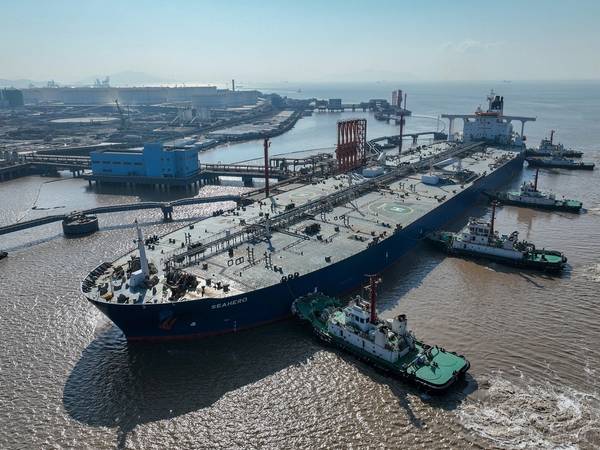An expert from an institute affiliated with Iran's Ministry of Oil has raised concerns about the country's oil dealings with China, revealing that these transactions bring minimal financial returns for Iran.
"Today, we are selling oil under deplorable conditions—at low prices with steep discounts—and in return, we are importing substandard Chinese goods at best," Morteza Behrouzifar from the Institute of International Energy Studies remarked in a candid discussion with a local website about the ongoing challenges facing Iran’s oil industry.
In an interview with ILNA, Behrouzifar further highlighted that Iran's current situation leaves it heavily reliant on China, which poses significant risks to the nation's economic sovereignty. This starkly contrasts with official claims that Iran sells crude oil to 17 nations, including some in Europe.
The expert also criticized the broader strategic missteps within the oil sector, describing them as rooted in "showmanship" rather than substantive achievements.
Over the past three years, he said there have been claims of massive foreign economic contracts—exceeding $100 billion—but these were often mere memorandums of understanding presented as binding agreements.
He argued that this has led to the depletion of national resources, including the National Development Fund (NDF), without any significant return on investment. "We did not achieve any results proportionate to the money invested," he noted, underscoring the inefficacy of these deals.
NDF, Iran's national wealth fund, is intended to reserve around 30% of oil profits for future generations. However, due to international sanctions and an inefficient economy that have perpetually strained the government's budget, the majority of the over $100 billion in savings has already been depleted.
The most recent instance that could be inferred from his remarks is the May agreement, in which Tehran Municipality discreetly finalized a two-billion-euro contract with a Chinese firm for the import of transport and traffic surveillance equipment, including electric buses. This clandestine deal sparked significant backlash, even among members of the city council.
"The president of the 14th government [Masoud Pezeshkian] must understand that if these conditions continue, the oil industry will not be able to survive," Behrouzifar warned.
Despite US sanctions reinstated in 2018 over Iran's nuclear program, China has continued to purchase Iranian oil, but under conditions that are far from favorable to Iran.
Last July, The Wall Street Journal reported that Iran's crude oil exports had surged to their highest levels in five years, albeit at steep discounts of up to $30 per barrel. The report corroborated estimates indicating that Iran exported 1.6 million barrels per day in May and June, a significant increase from the 250,000 barrels per day recorded in 2019 and 2020, shortly after the US reimposed comprehensive sanctions.
In addition to discounts, China apparently does not pay in cash for most of the oil, because Iran is also under US banking sanctions. Although on paper Iran annual oil revenues reach $35 billion, it is not clear how much hard currency Tehran receives.
China imports Iranian oil through tankers, which avoid detection by operating without transponders. Known as "ghost ships" or "dark fleets," these vessels employ sophisticated methods to conceal their ownership and movements, enabling them to circumvent international sanctions. They partake in high-risk operations such as ship-to-ship transfers in open waters and deactivate Automatic Identification System (AIS) transponders to mask their identities and evade detection.
Once they reach Chinese shores, the oil is rebranded as Malaysian or Middle Eastern crude. It is primarily bought by "teapots," small independent refineries that have absorbed the bulk of Iran's oil exports since larger state-owned refineries withdrew due to sanction fears.
As the Atlantic Council reports, China’s payments to Iran are made in renminbi through smaller, US-sanctioned financial institutions like the Bank of Kunlun. This minimizes exposure for China’s larger banks but leaves Iran with limited options for using the currency.
